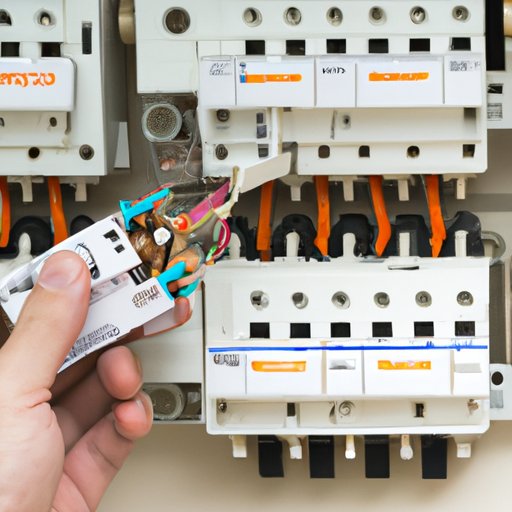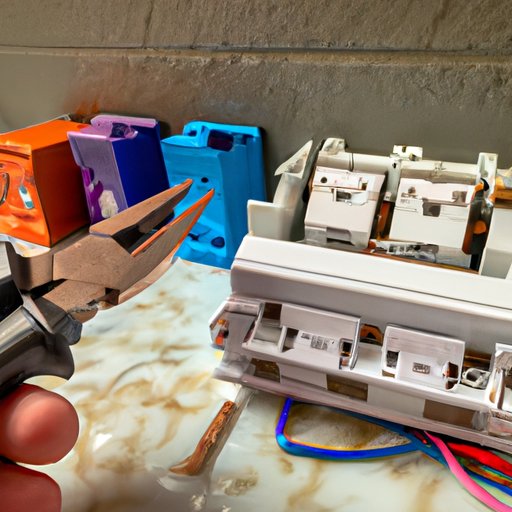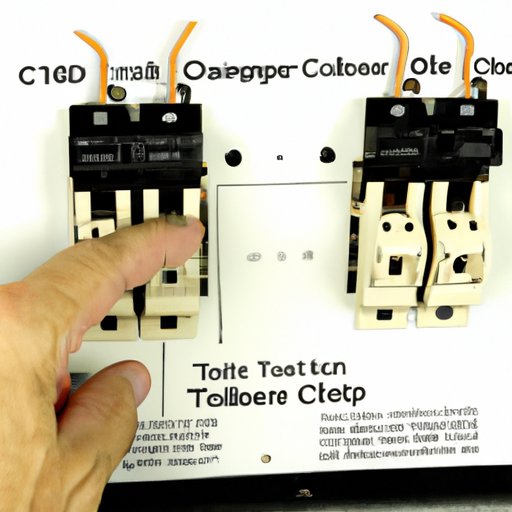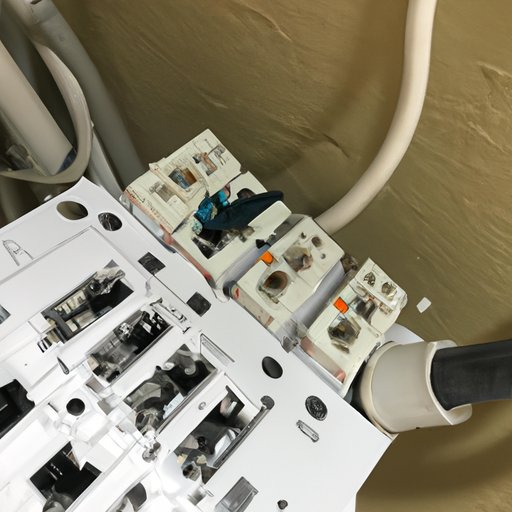Introduction
Have you ever been in the middle of a project or task only to have the power suddenly go out? This could be a sign that your circuit breaker is tripping. A tripping circuit breaker is one of the most common electrical problems homeowners face. It can be frustrating and confusing trying to figure out why it’s happening and how to fix it. In this article, we will explore the various reasons why your circuit breaker keeps tripping and provide tips on how to troubleshoot and fix the issue.

Troubleshooting Common Causes of Circuit Breaker Tripping
Before attempting to fix a tripping circuit breaker, it is important to understand the possible causes. One of the most common reasons for a circuit breaker tripping is an overloaded circuit. This occurs when too many appliances or devices are plugged into the same outlet or when too much wattage is being used at once. If a circuit is overloaded, the breaker trips to protect the wiring from overheating and causing a fire. Other common causes of a tripping circuit breaker include faulty wiring, ground fault, and short circuit.
Understanding the Reasons Why a Circuit Breaker is Tripping
In order to understand why a circuit breaker may be tripping, it is important to know how they work. Circuit breakers are designed to protect the wiring in your home from damage due to an overload, short circuit, or ground fault. When the current flowing through the circuit exceeds the rated amperage, the circuit breaker trips and cuts off the flow of electricity. There are different types of circuit breakers available, such as single-pole, double-pole, and GFCI. Each type of circuit breaker serves a different purpose and has its own unique features.
Home Electrical Safety: How to Reset Your Circuit Breaker
If your circuit breaker is tripping frequently, it is important to reset it properly. The first step is to identify the type of circuit breaker you have. Once you have identified the type of circuit breaker, turn off the power to the circuit by switching the breaker to the “off” position. Then, reset the circuit breaker by pushing the reset button. This should restore the power to the circuit, but if it continues to trip, the issue may be more serious and require professional attention.

DIY Guide to Fixing a Tripping Circuit Breaker
If the circuit breaker continues to trip after resetting, it is likely that there is an underlying issue that needs to be addressed. To diagnose and fix a tripping circuit breaker, start by locating the source of the problem. Check all outlets, switches, and fixtures connected to the circuit to see if any of them are malfunctioning. If so, replace the faulty wiring. You may also need to replace the circuit breaker itself if it is faulty.

Tips on How to Diagnose and Fix a Tripping Circuit Breaker
When diagnosing a tripping circuit breaker, it is important to check for overloaded circuits. If a circuit is overloaded, it is drawing more power than it is designed to handle. To prevent overloads, unplug rarely used appliances and electronics, add additional circuits, and install GFCI outlets. Additionally, test the electrical outlets with a voltage tester to make sure they are working properly and inspect the wiring for any signs of damage.
How to Avoid Overloading Circuits and Prevent Circuit Breakers from Tripping
The best way to avoid tripping circuit breakers is to prevent overloaded circuits. This can be done by unplugging rarely used appliances and electronics, adding additional circuits, and installing GFCI outlets. Additionally, it is important to practice safe electrical habits, such as not overloading outlets and using surge protectors when needed. Following these tips can help keep your circuit breakers from tripping and help keep your home safe.
Conclusion
Circuit breakers are designed to protect the wiring in your home from damage due to an overload, short circuit, or ground fault. Unfortunately, circuit breakers can trip due to a variety of reasons, such as overloading circuits, faulty wiring, ground fault, and short circuit. To diagnose and fix a tripping circuit breaker, it is important to locate the source of the problem, replace faulty wiring, and replace a faulty circuit breaker. Additionally, it is important to practice safe electrical habits, such as unplugging rarely used appliances, adding additional circuits, and installing GFCI outlets to prevent circuit breakers from tripping.
(Note: Is this article not meeting your expectations? Do you have knowledge or insights to share? Unlock new opportunities and expand your reach by joining our authors team. Click Registration to join us and share your expertise with our readers.)
